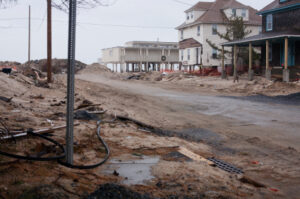We were very pleased to see this poignant editorial by Mr. Greenberg in the New York Times. As we begin the process of cleaning up after Hurricane Sandy we have an opportunity to reflect on our relationship with the natural environment.
 In reading Mr. Greenberg’s account of the historic oyster habitat around the New York & New Jersey Estuary, one can’t help but to make a connection to the grandeur and fragility of our own coastal cities. His description of the great “kingdom” that formed as “generation after generation of oyster larvae rooted themselves on layers of mature oyster shells […] until enormous underwater reefs were built up around nearly every shore of greater New York” is reminiscent of the long and deliberate processes which built New York City. It is reassuring to think that the native oyster populations, which were decimated in a relatively short amount of time, can serve not only as a warning but as part of the solution.
In reading Mr. Greenberg’s account of the historic oyster habitat around the New York & New Jersey Estuary, one can’t help but to make a connection to the grandeur and fragility of our own coastal cities. His description of the great “kingdom” that formed as “generation after generation of oyster larvae rooted themselves on layers of mature oyster shells […] until enormous underwater reefs were built up around nearly every shore of greater New York” is reminiscent of the long and deliberate processes which built New York City. It is reassuring to think that the native oyster populations, which were decimated in a relatively short amount of time, can serve not only as a warning but as part of the solution.
In learning from the difficult lesson of Hurricane Sandy, hopefully we will take stock of our many resources and continue to grow cities (and oyster reefs) with a greater understanding of what is necessary to form resilient communities.
Further Reading
Meet Water Resources Engineer Kayla BrownNew Mexico Must Become a Catcher of Rain
Ripple Effects
Get to know Water Resources Engineer Jake Radeff
Meet Conservation Biologist Nolan Schillerstrom
More From This Author
One year later. Are we still “judging” species?Thoughts On Adaptive Management
Appreciating Pollinators
Thoughts on Giving Children the Gift of Nature
Get to know Environmental Technician, Austin Vong

